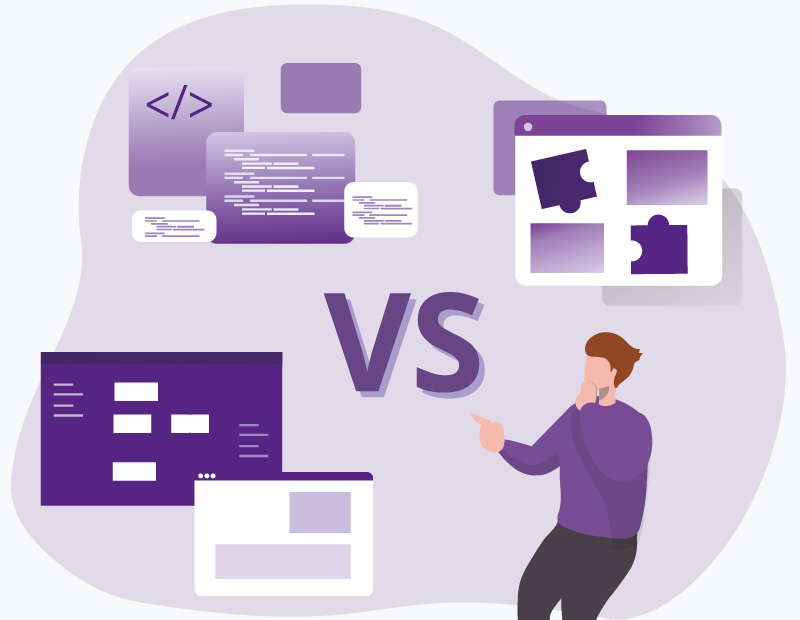At medicalvalues, we have deliberately chosen a platform approach that enables our customers to respond flexibly and efficiently to these challenges, using modern IT and AI as differentiators. Our approach has proven successful across various customers, from medical care centers (MVZ) to regional hospitals, university clinics, and laboratory chains.
Core IT Implementation Strategies
While transitions between approaches can be fluid, IT strategies generally fall into one of three categories based on the degree of customization:
- Adoption of off-the-shelf software
- A platform-based approach with tailored components
-
Full custom development
To better illustrate these differences, let’s draw a comparison to e-commerce. Since most people have interacted with online shops, this example provides a practical way to understand the various approaches:
1. Off-the-Shelf Software: This approach involves purchasing or licensing a ready-made solution that already provides the core functionality of an online shop. A classic standard approach allows for minimal configuration, such as logo and color customization, while keeping the core unchanged. The advantage lies in clearly defined standard processes and quick implementation times. A fitting example is Shopify: quick to deploy, but with limited room for customization. This approach works best when the software primarily serves a single, well-defined purpose and is not seen as an innovation area.
2. Platform Approach: Here, a platform (e.g., a framework) serves as the foundation, with specific components developed individually. This strategy combines standardized solutions with tailored adaptations, offering greater flexibility. Comparatively, this approach resembles models like Spryker or commercetools, which rely on modular structures while supporting efficient development and operations. Custom components, such as an innovative product configurator or AI-based product search, can be developed and integrated seamlessly.
3. Full Custom Development: This is the most complex and time-intensive option. The entire system is developed from scratch without relying on existing software or platforms. The key advantage is maximum differentiation, as seen in companies like Amazon. However, this option often involves high costs and significant development resources. Companies typically pursue this approach when their overall IT strategy leans towards a “make” rather than “buy” philosophy.
Specifics of Healthcare: The Advantage of a Middle Ground
In traditional business or MBA programs, there is frequent caution against being “stuck in the middle”—neither particularly cost-efficient nor distinctly premium. Yet, in healthcare, with its complex and rapidly changing demands coupled with constrained resources, a middle-ground approach can often be the best strategy.
Differentiation from Standard Software
While standard applications are quick to implement, they quickly hit limitations when the specific needs of a clinic or laboratory go beyond predefined processes. Similar to other industries (e.g., automotive), IT in healthcare is increasingly viewed as a differentiation tool, which pure off-the-shelf solutions cannot fully support.
Additionally, healthcare often involves entrenched IT structures, making integration into existing workflows (e.g., master data management) more challenging than in younger industries that have adopted cloud- and API-first products from the outset. Standard software operating models—such as cloud-only environments—often do not align with the requirements of every clinic or laboratory.
Differentiation from Custom Development
Full custom development offers maximum flexibility but comes with significant costs and resource demands, not just in development but also in ongoing operations. Regulatory requirements often necessitate additional features, increasing time and expenses. Meanwhile, rapid advancements in AI drive a high demand for innovation. Relying solely on custom development with limited IT resources risks investing heavily in “commodity” (standard functions) rather than differentiation, ultimately defeating the original purpose.
The medicalvalues Platform Approach: Combining Flexibility and Efficiency
The medicalvalues platform approach combines the necessary innovation and flexibility with efficiency gains through standardized components. Our platform offers modular solutions that can be continuously expanded and customized to meet specific customer requirements. This enables our clients to effectively address the dynamic demands of healthcare, drive innovation and differentiation, and ensure efficient implementation and operation.



